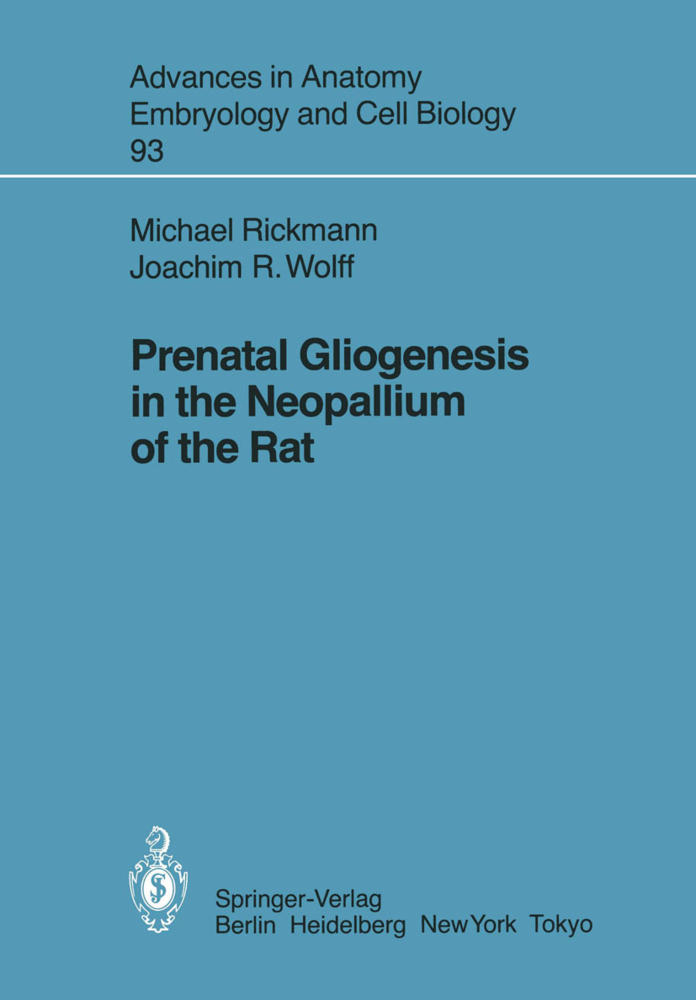The Satellite Cells of the Sensory Ganglia
The Satellite Cells of the Sensory Ganglia
The earliest mention of a cell sheath enveloping the body of the neurons in sensory ganglia is probably the following description by Valentin: "Sowohl die Kugeln der Be legungsformation 1 , als die Primitivfasem, werden von eigenthi. imlichen, sie isolirenden Scheiden umgeben, welche aile Stufen der Dicke von einer fast gar nicht mehr wahr nehrnbaren Zartheit bis zu einer ziemlich bedeutenden Starke durchlaufen. Diese Hill len sind aber immer zellgewebeartiger Natur" (1836, p 162). In some illustrations of the above mentioned paper the nuclei of the satellite cells adjacent to the surface of the nerve cell body, both in the trigeminal ganglion and in the ganglia of the vegeta tive nervous system, are clearly shown (Fig. lA). The author, however, miSinterpreted these nuclei as pigment granules (Pigmentkorperchen). A little later, Remak (1838) denied the existence of the perineuronal cell sheath. This prompted a ready reply from Valentin (1839), who offered a more detailed description of the perineuronal cell sheath, illustrated it with new drawings (Fig. IB), and gave a correct interpreta tion of the nuclei. In fact, he wrote: Fig. lA-B. Nerve cell bodies of sympathetic ganglia with the nuclei of the satellite cells on the neuronal surface. Redrawn from Valentin; A, 1836; B, 1839.
3 Shape of Satellite Cells
4 Structure of Satellite Cells
4.1 Plasma Membrane
4.2 Nucleus
4.3 Cytoplasmic Organelles
4.4 Cytoplasmic Lacunae
4.5 Cell Inclusions
5 Relationships Between Satellite Cells
6 Perikaryal Myelin Sheaths
7 Neuron-Satellite Cell Boundary
8 Boundary Between the Satellite Cell Sheath and the Connective Tissue Space
9 Quantitative Relationships Between Nerve and Satellite Cells in the Adult
10 Origin and Development of Satellite Cells
10.1 Origin
10.2 Development
10.3 Neuron-Satellite Cell Boundary
10.4 Boundary Between the Satellite Cell Sheath and the Connective Tissue Space
10.5 Quantitative Relationships Between Nerve and Satellite Cells
11 Chemical and Cytochemical Aspects of Satellite Cells
12 Mitotic Activity of Satellite Cells in Adult Animals
13 Phagocytic Activity of Satellite Cells
14 Functional Properties of Satellite Cells
15 Satellite Cells in Tissue Cultures
16 Reaction of Satellite Cells to Experimental Conditions
16.1 Chemical Agents
16.2 Radiation
16.3 Axonal Injury
16.4 Other Experimental Conditions
16.5 Conclusions
17 Reaction of Satellite Cells to Pathologic Conditions
17.1 Viral Infections
17.2 Hereditary Neuropathies
17.3 Other Pathologic Conditions
17.4 Reaction of Satellite Cells to Neuronal Degeneration
18 Roles of Satellite Cells in Sensory Ganglia
18.1 Mechanical Support for Ganglionic Neurons
18.2 Control of the Traffic of Materials to and from the Ganglionic Neuron
18.3 Control of the Levels of Neuroactive Amino Acids
18.4 "Trophic" Role Toward the Ganglionic Neurons
18.5 Regulation of Ion Concentration in the Micro-environment of GanglionicNeurons
18.6 Influence of the Conduction Velocity in Bipolar Sensory Neurons
18.7 Production of the Basal Lamina and Collagen Fibrils
19 Comparison of Satellite Cells of Sensory Ganglia and Neuroglial Cells in the Central Nervous System
20 Similarities Between the Satellite Cells of Sensory and Autonomic Ganglia and Schwann Cells
21 Concluding Remarks
22 Summary
References.
1 Introduction
2 General Characteristics of the Satellite Cell Sheath in the Adult Animal3 Shape of Satellite Cells
4 Structure of Satellite Cells
4.1 Plasma Membrane
4.2 Nucleus
4.3 Cytoplasmic Organelles
4.4 Cytoplasmic Lacunae
4.5 Cell Inclusions
5 Relationships Between Satellite Cells
6 Perikaryal Myelin Sheaths
7 Neuron-Satellite Cell Boundary
8 Boundary Between the Satellite Cell Sheath and the Connective Tissue Space
9 Quantitative Relationships Between Nerve and Satellite Cells in the Adult
10 Origin and Development of Satellite Cells
10.1 Origin
10.2 Development
10.3 Neuron-Satellite Cell Boundary
10.4 Boundary Between the Satellite Cell Sheath and the Connective Tissue Space
10.5 Quantitative Relationships Between Nerve and Satellite Cells
11 Chemical and Cytochemical Aspects of Satellite Cells
12 Mitotic Activity of Satellite Cells in Adult Animals
13 Phagocytic Activity of Satellite Cells
14 Functional Properties of Satellite Cells
15 Satellite Cells in Tissue Cultures
16 Reaction of Satellite Cells to Experimental Conditions
16.1 Chemical Agents
16.2 Radiation
16.3 Axonal Injury
16.4 Other Experimental Conditions
16.5 Conclusions
17 Reaction of Satellite Cells to Pathologic Conditions
17.1 Viral Infections
17.2 Hereditary Neuropathies
17.3 Other Pathologic Conditions
17.4 Reaction of Satellite Cells to Neuronal Degeneration
18 Roles of Satellite Cells in Sensory Ganglia
18.1 Mechanical Support for Ganglionic Neurons
18.2 Control of the Traffic of Materials to and from the Ganglionic Neuron
18.3 Control of the Levels of Neuroactive Amino Acids
18.4 "Trophic" Role Toward the Ganglionic Neurons
18.5 Regulation of Ion Concentration in the Micro-environment of GanglionicNeurons
18.6 Influence of the Conduction Velocity in Bipolar Sensory Neurons
18.7 Production of the Basal Lamina and Collagen Fibrils
19 Comparison of Satellite Cells of Sensory Ganglia and Neuroglial Cells in the Central Nervous System
20 Similarities Between the Satellite Cells of Sensory and Autonomic Ganglia and Schwann Cells
21 Concluding Remarks
22 Summary
References.
Pannese, Ennio
| ISBN | 978-3-540-10219-9 |
|---|---|
| Artikelnummer | 9783540102199 |
| Medientyp | Buch |
| Copyrightjahr | 1981 |
| Verlag | Springer, Berlin |
| Umfang | X, 114 Seiten |
| Abbildungen | X, 114 p. 30 illus. |
| Sprache | Englisch |











